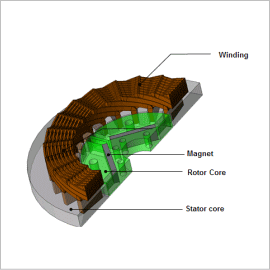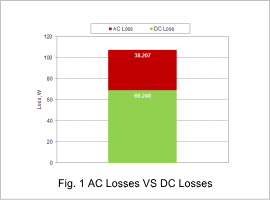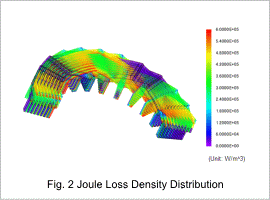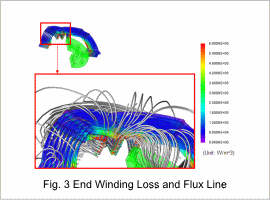Overview

These losses can be defined by their two components namely DC and AC losses , DC winding loss is easily analyzed by circuit analysis of the windings and are within the realm of arithmetic calculation. The AC loss components are caused due to various effects of the magnetic fields generated by the conductors in proximity of each other. This used to be estimated by creating prototypes and doing tedious measurements on the coil parts. This used to make the design workflow expensive and time consuming.
However by using a 3-D Finite Element Analysis on these coils the losses can be analyzed relatively quickly and economically.
In this example, we introduce the case study that evaluates AC losses in coils of an IPM motor.
Loss Analysis
The difference between DC and AC losses can be gleaned from Fig. 1.
After considering AC losses and subsequently adding DC and AC losses we get a total increase of 45 % in losses. This is quite a significant amount of increase.
The AC losses in the end winding as seen in Fig. 2 depend on the shape of the winding as well as the flux leakage through the end windings. This happens due to mutual flux linkages between individual conductors which create eddy currents flowing through system.
In Fig. 3, the flux linkages between the stator end (fringing effect) and the coil and mutual flux linkages in the conductors can be observed. These are the main drivers behind AC losses in the end winding.





